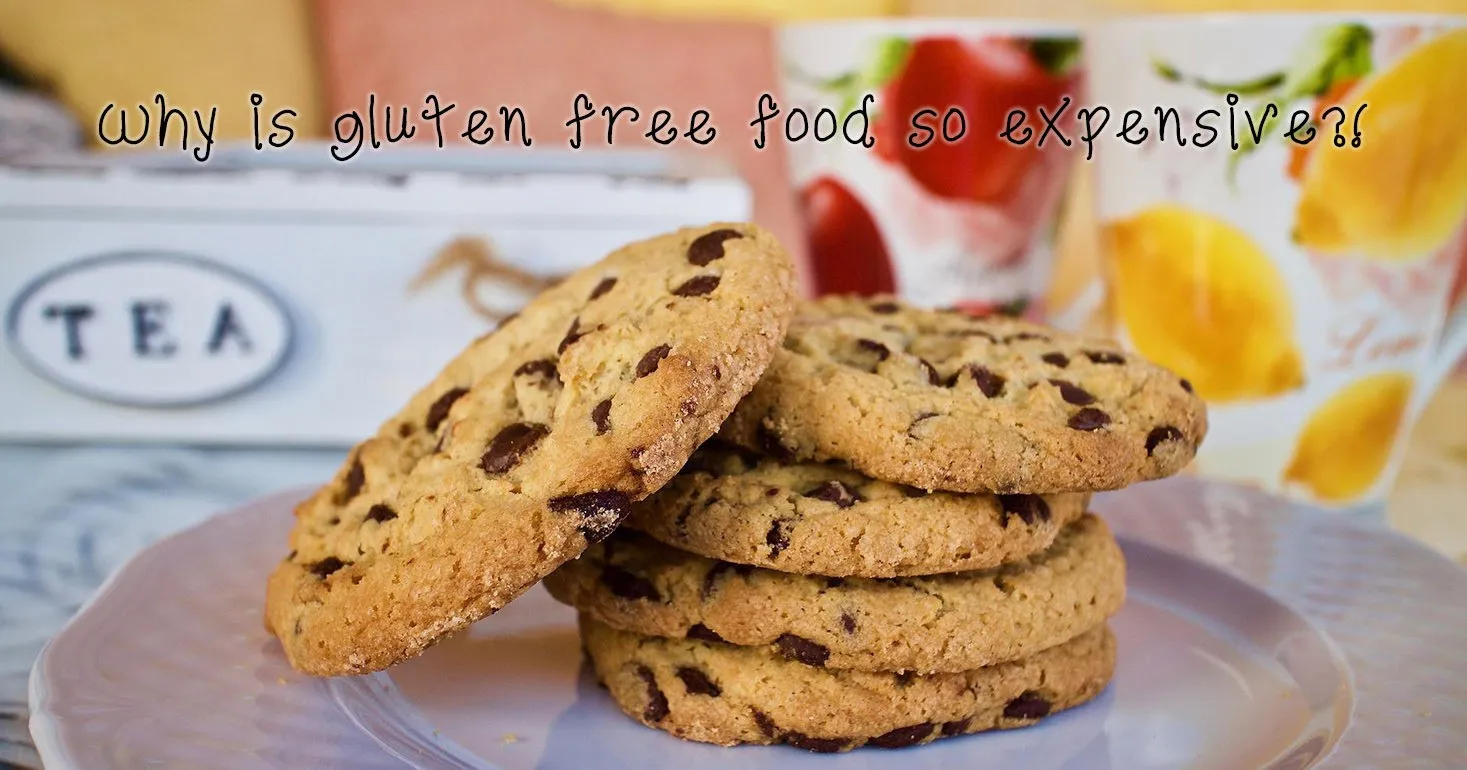Why Is Gluten Free Food So Expensive?!
Back to all blogs.I see a lot of people online asking "why are gluten free products so expensive to buy?" and I wanted to answer that as much as I could. There are so many elements that add to the cost of gluten free products, it isn't as clear cut as people think when it comes to the price difference between gluten free and wheat based products. So what can add to the cost? Let's have a look!
Last updated 20th June 2022
Published 20th June 2022

The cost of living in rising at an alarming rate as it is, but when you have Coeliac or food allergies the cost of living can be astronomical. It has never been cheap but now is even higher. But what contributes to the costs? Why exactly is gluten free so much more expensive?
If you look at the price of none gluten free compared to gluten free...
I have tried to match the products based on same supermarket, a popular branded, premium/artisan and independent bakeries so the types of bread as as close matched as possible to see the price differences. With independent bakeries I looked at 3 different online ones for each.
Wheat Based Bread
Asda standard medium white loaf 50p (12.5p per 100g)
Roberts standard medium white loaf £1.20 (15p per 100g)
Extra special supermarket bakery bread £1.75 (42.5p per 100g)
Independent bakeries £3.80/£4.65/3.75 (47.5p/38.5p/47p per 100g)
Gluten Free Bread
Asda free from loaf £1.60 (29.9p per 100g)
Promise free from white loaf £3.25 (68p per 100g)
Schar free from white loaf £2.50 (83.3p per 100g)
Independent bakeries £2.80/£3.99/£6.50 (72p/50p/90p per 100g)
So averaged out, gluten free bread is around double the price of standard gluten containing bread, some brands slightly more than that!
Independent bakeries seem to be more around a similar price on both, but we are talking probably more artisan when it comes to regular bread which is always higher in cost.
All other products follow a similar structure of being around double the price so I am not going to compare other products, you get the gist!
There are multiple elements of increased cost when it comes to gluten free, it isn't quite as clear cut as some may think. So let us dig a little deeper.
I'm going to work on the theory we are only looking at bread but in principle it will be a similar theory with any other gluten free product.
So, to start with, to make an edible gluten free bread, generally you need more ingredients than with wheat bread, more ingredients equals more cost.
To make wheat bread, in essence you need wheat flour, water and yeast and you have an edible loaf but to make a gluten free one it isn't quite that simple. Rice flour on its own won't work, neither will just potato flour or tapioca flour so you have to have a blend of different grains at the right ratio, it could be just these three.....it may be more!
Then add to that you don't get the rise you do with wheat so you need xanthan gum or psyllium husk. And lets not forget the yeast and water. Already at it's very basic form you have double the ingredients, and most of the time the very basic isn't enough to get you a decent gluten free loaf. Often there is added sugar and even egg.
So lets look at the cost. I spoke to the lovely Mina from Wildcraft Bakery about this one, I only know the difference from a personal perspective, not a full scale bakery, and she very kindly told me just how much she pays (as of May 2022)
Most independent bakeries will use a particular brand of wheat flour which costs £22.50 per 25kg (90p per kg). Gluten free flour used by various gluten free bakeries including Wildcraft costs £38 per 16kg (£2.30 per kg). 2.5x the price of wheat flour! So if we look at the loaves above and at how much they cost per 100g 9p is wheat flour in gluten filled loaves whereas gluten free flour makes up 23p!
Last year 25kg of xanthan gum cost her £125, in February 2022 it shot up to £338 and has now stabilised to £268, which is still more than DOUBLE last year. Now yes, there is very little xanthan gum in a loaf but it adds up. I am simplifying this hugely here but say there is 5g (1tsp) per loaf, that's 5,000 loaves one 25kg batch will make, that adds an extra 6p per to your loaf. So if the recipe uses more than that just think how it adds up!
That is just two ingredients I have covered there. don't forget the extra sugar most gluten free breads have, eggs and even milk or milk powder you get added to some loaves...and don't forget the cost of all these have increased recently too! All these extra ingredients will add to the cost.
So lets move on from ingredients....
What else adds to the cost?
Well if you buy a product which carries the crossed grain logo to show it is a product approved as gluten free by Coeliac UK, that carries a fee for the manufacturer. And the amount they pay depends on the turnover of products they have. I can't tell you specifics on this, because I don't know, but this is bound not to be cheap for the manufacturers....more than likely running into thousands for many manufacturers.
There is more about the cross grain licensing on Coeliac UK
Many manufacturers will lab test there products too, usually annually. to make sure the products are falling into EU regulations. Gluten free is a legally protected term (so if it says gluten free, it IS gluten free, manufacturers have to follow certain regulations to be allowed to state gluten free on packaging) but manufacturers are only recommended to lab test their products, it isn't compulsory, the majority do go through the testing through.
There are lots of labs that can test for gluten and prices vary, they can just be a few hundred (but remember that's per product too!) but it is all extra expense. Some companies may also test more than once a year!
Most manufacturers will have dedicated facilities when it comes to gluten free, so they can ensure absolutely no contamination can occur. It is not always the case but very, very common practise.
So how does that incur extra money? Well you have got an extra factory to run that produces less than a gluten producing one. The less you produce the higher the cost of a product, the more you can mass produce the lower the price for the consumer at the end.
In 2016 it was estimated 8.5 million people in the UK were gluten free, over 10% of the population, with only 1% being diagnosed Coeliac.
If we go off that then potentially a factory producing gluten filled loaves more than likely churns out 9x the amount of products as a gluten free one. Again I am over simplifying this, Warburtons state they make 472 million normal wheat loaves in a year (as stated in their facts)...these are sold to the 90% of the population that can eat wheat. So it's probable they churn out around 52 million gluten free loaves from their dedicated facilities for the 10% of gluten free people. It is a huge difference in production size.
Smaller size also leads to higher cost, the less a factory makes the more it costs to produce a product. The more products made in a factory the higher amount of ingredients they can buy in batch (lowering cost), and split other costs such as running machinery. A tiny independent bakery will be ordering much smaller amounts of ingredients compared to nationwide manufacturer making the price even higher!
So, that is just three things that ramp cost up...
Don't forget the ones that will effect all businesses but again the smaller the business the more it adds to the cost. The likes of wages, property rent, taxes, electricity, gas, water...
There are so many things to factor in that effect the cost of your products, it is quite scary when you think about it!

Your Comments
Submit Comment
Want to leave a comment on this blog? Feel free to join the discussion!